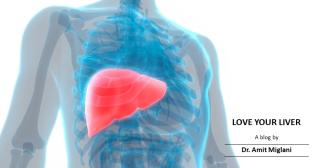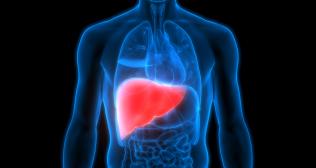
Gluten Allergies: What Causes Them, Signs to Look For, and How to Treat Them
Gluten allergies are related disorders caused by consuming gluten, a protein in various foods. Individuals become sick after consuming gluten. Autoimmune disorders, certain carbohydrates, or allergic food conditions cause these disorders. Depending on the type of damage, the body may show various symptoms, such as pain, intestinal damage, or hives.
Gluten:
Gluten is a mixture of complex proteins containing gliadins and glutenins rich in prolines and glutamines that intestinal enzymes cannot digest. When consumed, gluten produces an endproduct of peptide proteins indigestible by the intestine. Indigestion occurs due to the insolubility of specific proteins in the gluten structure. This indigestible food triggers various responses, producing different symptoms in the host.
What causes gluten allergies:
- Gluten allergies are a type of gluten-related disorder. Other varieties in this category include gluten intolerance and celiac disease. This blog explains the various types of gluten disorders, along with gluten allergies, celiac diseases, and gluten intolerance,
- Gluten intolerance occurs due to gluten consumption, known as gluten sensitivity or non-celiac gluten sensitivity. This intolerance is not a direct reaction of the body to gluten but an abnormal response to carbohydrates present in the food. As the body does not absorb the particular carbohydrate, the food accumulates in the gut, ferments, and causes sickness. The lining of the intestine starts leaking, releasing the bacteria into the bloodstream. This results in inflammation, leading to gluten intolerance. Gluten intolerance is a non-autoimmune and non-allergic disease condition caused by gluten consumption.
- Wheat allergy: Wheat allergy is the classic food allergy caused by wheat consumption. Depending on the route of exposure of the body to the allergen, it can present as Baker's asthma, food allergy, wheat-dependent exercise-induced anaphylaxis, and contact urticaria. Gluten allergies to wheat are type 1 and IV hypersensitivity reactions. IgE immunoglobulins play a vital role in the initiation of wheat allergy. This allergy is triggered by consuming foods such as bread, pasta, or any similar food containing wheat. It also occurs due to play dough, meat products, natural flavorings, and gums. Wheat-allergic individuals can also be allergic to rye and barley.
- Gluten is a protein seen in grains like wheat, barley, rye, and others. The American College of Allergy, Asthma, & Immunology specifies that gluten allergy is a misnomer and not similar to wheat or gluten intolerance.
- Celiac disease: Celiac disease is an autoimmune reaction commonly seen in children. The body recognizes gluten as a foreign particle and reacts, leading to various symptoms. This autoimmunity sets inflammation by damaging the digestive tract. This abnormal autoimmunity occurs due to the body's genetic predisposition. The body produces many autoantibodies against gluten. Celiac diseases can be associated with other autoimmune conditions. An abnormal reaction between previous intestinal infections and natural bacteria of the gut triggers celiac disease.
Signs and Symptoms:
Gluten intolerance exhibits the following symptoms:
Gut symptoms such as abdominal pain, bloating, cramping, diarrhea, nausea, and vomiting, and others like anxiety, anemia, brain fog or difficulty concentrating, depression, fatigue, headache or migraines, joint pain, and skin rash are some of the symptoms of gluten intolerance. Individuals may be too tired to think rationally. Fatigue leads to sleep issues, worsening the gluten intolerance symptoms.
Guten allergy symptoms due to wheat allergy include the following:
Gluten allergen symptoms are not due to gluten allergy but are due to wheat allergy. The symptoms in this condition begin an hour after consumption or after consuming the abnormal food. These symptoms can range from mild allergic reactions to life-threatening anaphylaxis. Hives or skin rashes are light or dark red elevations with itch seen in these patients, along with shortness of breath, lightheadedness, and vomiting, which are some of the classic signs of allergy seen in gluten allergy symptoms due to wheat. Stuffy nose and Baker's asthma are also seen in this condition.
Celiac disease symptoms show the following:
Celiac disease produces symptoms due to inflammation leading to chronic diarrhea, difficulty in absorption of food, loss of weight, and failure to thrive. Pale stools occur in this condition due to damage to the lining of the intestines and difficulty absorbing nutrients. Paleness may also be associated with the foul smell of the stools. It can also produce various non-celiac symptoms such as anemia, chronic fatigue, osteoporosis, spleen dysfunction, infertility, central nervous system disorders, skin rashes, and occasionally cancer if not treated.
Joint pains are also seen in celiac diseases due to the abnormal pain messages sent to the brain, leading to increased pain sensitivity compared to others. Anemia and chronic fatigue decrease the energy levels in these patients, making them irritable. Unexplained weight loss and chronic malnutrition occur in those with celiac disease due to a lack of nutrient absorption and appetite loss.
Diagnosis of gluten-related disorders:
Specific tests diagnose various gluten disorders. These include the following:
Tests for gluten intolerance:
The gluten intolerance test is a specific test that diagnoses gluten intolerance. A healthcare professional (HCP) understands the history and symptoms and advises gluten intolerance tests. The gluten intolerance test includes three stages. Initially, a gluten-containing diet is advised for six weeks. The HCP advises skin and allergy tests to rule out wheat allergy or celiac disease. Later, gluten is stopped, and a gluten-free diet is taken by monitoring the symptoms. If there is an improvement in the symptoms during this phase, gluten is again introduced to the diet. If the symptoms recur, then a diagnosis of gluten intolerance is made. Blood tests do not reveal any antibodies, and endoscopy does not indicate any damage to the intestine due to gluten intolerance.
Tests for wheat allergy:
A skin prick test is done to diagnose an allergy. Extracts of purified allergen are injected into the skin on the forearm, and the individual is carefully observed for the development of allergic symptoms in the form of rashes or bumps. The HCP also prescribes blood tests to detect allergy-causing antibodies to wheat proteins. Individuals are also advised to keep a diary and note what food was consumed and when.
Occasionally, the HCP also recommends an elimination diet to remove specific foods from the diet, and food challenge testing may also be done to rule out gluten allergy symptoms caused by wheat. The food challenge test is the gold standard for diagnosing wheat allergy, as skin prick tests have a relatively lesser predictability of diagnosing wheat allergies.
Tests for celiac disease:
The HCP prescribes specific blood tests that detect increased levels of antibodies in the blood as the body identifies gluten as an invader that damages the intestine. Genetic testing for human leukocyte antigens rules out celiac disease. The HCP may also prescribe an endoscopy test to detect any damage to the internal structures in the intestine.
Management of gluten allergies:
Treatment of gluten-related disorders differs between the various types of disorders.
- Gluten intolerance treatment does not have any specific treatment or prevention strategies. However, most people with gluten intolerance have reduced symptoms due to the consumption of a gluten-free diet. However, care should be taken to monitor blood sugar levels.
- Gluten allergies due to wheat are allergic reactions managed by medications such as antihistamines and epinephrine. Antihistamines control the minor symptoms of wheat allergy. They must be taken immediately after exposure to wheat. Epinephrine is an emergency injection prescribed to individuals who have severe life-threatening reactions. Research is being carried out to use immunotherapy for wheat allergy by injecting small doses of the allergen into the body so that the body gets used to it. However, these experiments are at clinical trial levels.
- Consuming a gluten-free diet helps manage celiac disease. Besides wheat, gluten is also found in barley, durum, malt, rye, and semolina. One should work with a dietician or nutritionist who can prescribe gluten-free diets to individuals who have celiac disease. This diet helps reduce inflammation and heal the intestines. Nutritional deficiency is common in Celiac disease, so vitamin and mineral supplements that include Iron, copper, and folic acid are prescribed. In the case of celiac disease that has severely damaged the intestine, oral steroids control inflammation of the disease.
Prevention of gluten-related disorders:
- Gluten intolerance: Consuming a low-fat, high-fiber diet, regular lab tests for anemia, high cholesterol, and nutritional deficiencies, identifying gluten-containing ingredients, and reading beverage labels.
- Wheat allergy: Avoid wheat-containing foods, identify gluten-containing food labels, and contact with gluten-containing products.
- Celiac disease: Avoid gluten-containing foods, such as wheat, barley, rye, and bakery products containing these grains. Read the labels on ingredients to see if they contain gluten. When planning to eat outside, follow a gluten-free diet and keep some gluten-free snacks handy. Have a gluten test strip that detects gluten in foods with unclear ingredients.
Gluten-related disorders include gluten intolerance, wheat allergies, and celiac disease. The symptoms differ between conditions as the pathways of the disease condition vary. Gluten intolerance tests and allergic tests are prescribed for respective disease conditions. Gluten allergy management varies according to the symptoms and diagnosis.
Fortis Hospital is an advanced healthcare facility with experienced gastroenterologists and allergy specialists who can diagnose and manage conditions using state-of-the-art facilities to improve patient outcomes.



















